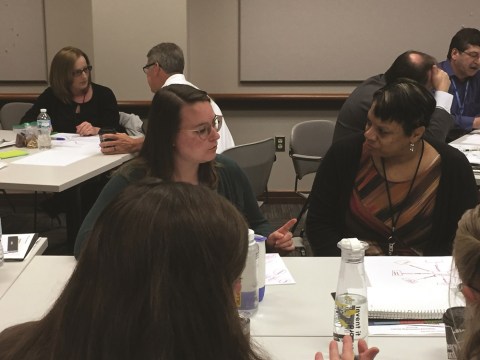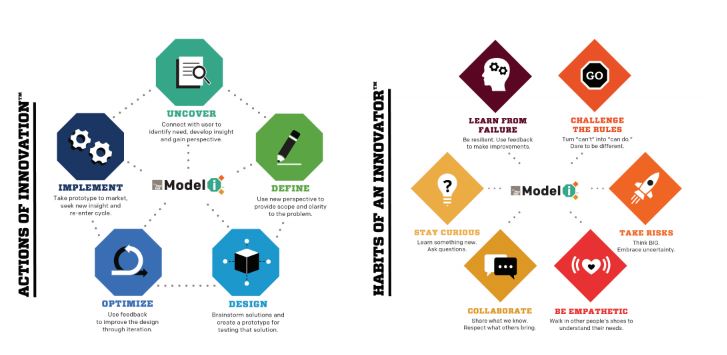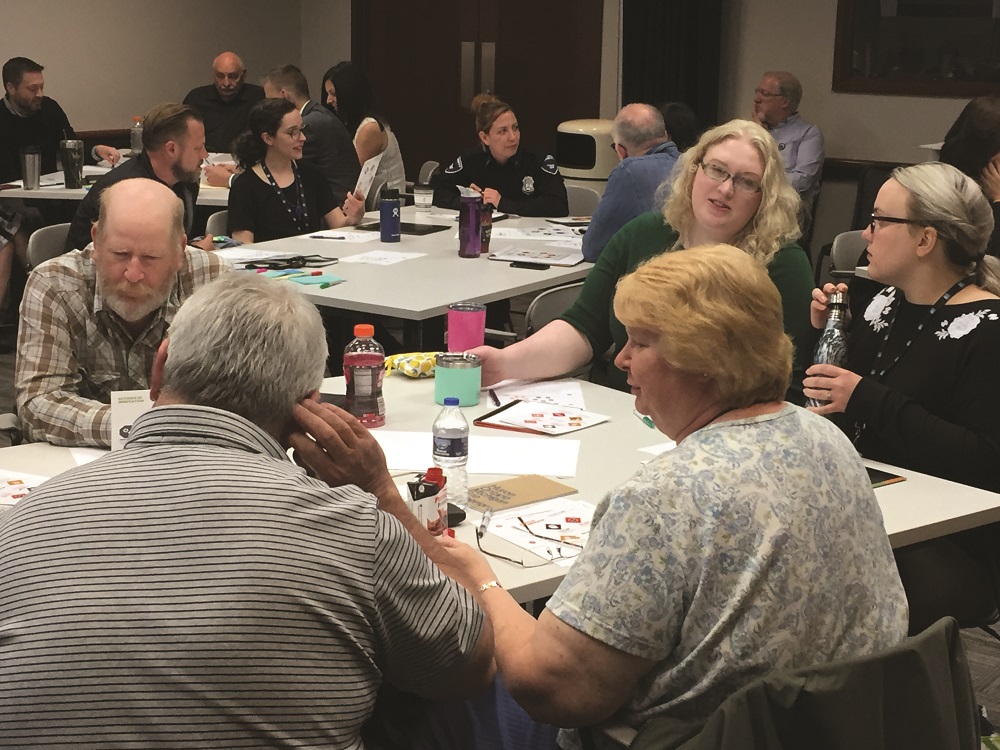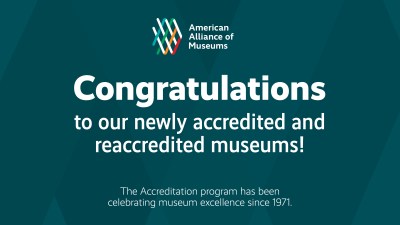
This article originally appeared in the September/October 2019 issue of Museum magazine, a benefit of AAM membership.
How do you retain talented staff? How do you develop their skills, talents, and knowledge? How can you get the most from them when they are already delivering their best efforts? How do you inspire commitment?
These are questions that The Henry Ford, like all museums, faces every day. Museums are populated by talented staff who have a passion for particular subjects, people who trade higher paychecks for higher callings. How do you help them grow?
In examining these questions, we compiled a mountain of evidence-based on our many years of participating in Fortune magazine’s Best Places to Work nationwide survey. Combined with our own anecdotal knowledge, an answer became clear —professional development. Our staff has an intense desire for training and learning.
As is the case with most museums, we operate with limited resources. So our next question was: Where do we focus our resources, time, and energy? Our data showed that we are already providing world-class onboarding and hospitality and skill training to our frontline staff.
 Patricia Mooradian, our president and CEO, provided the way forward by sharing her belief that the care and development of our people is foundational to her role. If that is the case, then isn’t that the foundation of all leaders’ roles within the organization?
Patricia Mooradian, our president and CEO, provided the way forward by sharing her belief that the care and development of our people is foundational to her role. If that is the case, then isn’t that the foundation of all leaders’ roles within the organization?
This realization led us to develop Inspiring Leadership, a comprehensive professional development program for managers, directors, and executive leaders. We identified 167 organizational leaders as the initial participants.
The Concept
When undertaking a new initiative of this magnitude, it is always wise to draw on your core strengths. Our first core strength is our mission of inspiring staff and visitors to learn in order to shape a better future. Everything we do must reflect and connect to this mission. This focus served us well as we developed our Inspiring Service onboarding program and our Inspiring Excellence frontline staff training program.
In developing Inspiring Leadership, we decided that we would not simply teach leaders a few management tools that they may never use. Instead, we would use data, research, and our own rich archive of stories of leadership, innovation, ingenuity, and resourcefulness to inspire our leaders to embrace the importance of care and development of people. Our aim is to both refine managerial skills and enhance leaders’ abilities to inspire their teams. This first year we are using instructor-led classroom sessions that engage participants through a variety of interactive learning designs. All but one of the sessions are being delivered by internal instructors.
Our second core strength is the talent and experience of all the staff at The Henry Ford. Having spent decades studying innovation and leadership in designing experiences for our guests, we knew we had the ability to do the same for ourselves.
With these core strengths as our parameters, we developed the program’s four primary goals:
Build a leadership culture where the support of people’s development and growth is woven into the daily fabric of working life. Successful leaders will reflect this approach in their regular operations, daily routines, and conversations with their team members.
Create a forum for our leaders to reflect, learn, and support one another in best leadership practices. While The Henry Ford is a multifaceted operation featuring multiple venues and functions, successful leaders can learn and support one another regardless of their individual areas of responsibility.
Build a shared language of leadership. It is hard for successful leaders to communicate if they do not speak the same language.
Become more effective as ambassadors of The Henry Ford and as agents of change. Successful leaders have their people’s confidence and trust, especially in times of uncertainty or change.
The Process
No two workplace cultures are the same. What works for one often fails spectacularly for others. Rather than attempting to pound some round peg of an off-the-shelf model into the square hole of The Henry Ford, we created a leadership model that reflects the mission, goals, and unique atmosphere of our workplace.
Designed by our directors of organizational culture and leadership development and training, The Henry Ford Leadership Model focuses on inspiring leadership, which translates to leading with vision, knowledge, service, and character. In doing so, leaders support our organizational philosophy that leaders “lead people, manage resources.” Based both on historical lessons of successful leadership and the newest research in the field, this model reflects the leadership culture we wish to establish.
The ability to apply organizational philosophies and practices to ever-changing situations is vital to successful leadership. In their work with educators and schools, our Learning and Engagement Team and partners in the Henry Ford Learning Institute developed Model i, The Henry Ford’s Innovation Learning Platform. Created for students and teachers to foster a spirit of innovation, Model i uses habits and actions of the innovator, drawn from research on past innovators, as a basis for innovative thinking. (See “Model i-Innovation Powered by Perspective” for more information on this learning platform.) We want to develop leaders who embrace innovation and apply it to meet real-world challenges and opportunities, so Model i was perfect for our program.
With our learning models in place, the next step was to identify who would participate in the program. Too often, leadership programs involve only one level of leaders, leading some to ask, “Why don’t we get to do that? Aren’t we leaders, too?” These questions cause division within the very group of people you want to support.
To accomplish our goal of creating a leadership culture, we decided that all managers—including our most senior leaders and our president—would go through the program. With a shared forum, senior managers would become aware of staff issues and challenges, fostering an atmosphere of trust and support across all levels.
We created five daylong (eight-hour) Inspiring Leadership sessions that occur throughout the year. All invitees, including our executive-level participants, are asked to clear their schedules on those days. In this first year, all leaders participate in every module. The program will continue to be refined in future years with new learning opportunities for participants.
We also plan to develop a version of these first five modules for new leaders who are either hired as such or promoted from within the organization.
The final step in the design process was identifying the leadership topics to address in the sessions. Based on the results of a leadership needs assessment we conducted last year, we decided to focus on an introduction to leadership theory and best practices, coaching for excellence, communication, and team building, as well as some basic planning and goal-setting skills.
Participants are grouped into one of six cross-functional and cross-level groups, each with about 30 leaders. We call these groups “cohorts,” and people stay with their cohort throughout the program in order to establish connections with people in different areas and to enhance camaraderie.
The Results So Far
Because our participants come into the training with different levels of knowledge of leadership theory, modules 1 and 2 focus on data-driven research about leadership. This creates a more level theoretical base that will help everyone see the relevance of this training to their work.
Modules 3, 4, and 5 move toward application of theory and how we can all reach our potential as leaders. We will learn and practice in-the-moment coaching techniques, work through real scenarios for cross-functional collaboration, and practice critical and candid communication methods.
So far we have already seen increased connections among participants, in both number and depth. Participants are sharing their insights inspired by their increased knowledge of theory, with comments such as, “So authority is not leadership, but wise and judicious use of authority is a vital building block for good leadership” and “Knowing where your people are coming from is a sort of energy, and we as leaders can direct that energy in a proper and positive direction.”
The attitude of “I don’t get this” has been replaced by “I want to get this!” This change, perhaps more than anything else so far, shows that we are moving along the right path.
Model i—Innovation Powered by Perspective
 To unleash everyone’s potential to innovate, The Henry Ford has developed Model i, a unique learning framework based on artifacts and stories in The Henry Ford Archive of American Innovation. This remarkable collection provides unprecedented insight into the way people innovate across 300 years of American history.
To unleash everyone’s potential to innovate, The Henry Ford has developed Model i, a unique learning framework based on artifacts and stories in The Henry Ford Archive of American Innovation. This remarkable collection provides unprecedented insight into the way people innovate across 300 years of American history.
For more than 90 years, our curators and historians have studied the archive’s content, curating stories of American ingenuity, resourcefulness, and innovation that continue to evolve with today’s breakthroughs. It is this experience, combined with our decade-long focus on innovation education, that provides the expertise behind Model i. The framework has two frames: Actions of Innovation and Habits of an Innovator. Together, they serve as a language to describe Innovation Journeys within our collection — and activate learners through their own innovation journeys.
Actions of Innovation
Innovation is messy and there’s no one formula, but when we set out to pursue a new idea or solve a new problem, we can learn and act in ways that increase our chances of success. For would-be innovators, this set of guideposts helps point the way forward.
Uncover—Connect with users to identify need, develop insight, and gain perspective.
Define—Use new perspective to provide scope and clarity to the problem.
Design—Brainstorm solutions and create a prototype for testing that solution.
Optimize—Use feedback to improve the design through iteration.
Implement—Take the prototype to market, seek new insights, and re-enter the cycle.
Habits of an Innovator
Developing our mindset—the way we see, think, and interact with something—is especially useful for staying motivated and inspired to explore new ideas and overcome challenges.
Challenge the rules—Turn “can’t” into “can do.” Dare to be different.
Take risks—Think BIG. Embrace uncertainty.
Be empathetic—Walk in other people’s shoes to understand their needs.
Collaborate—Share what we know. Respect what others bring.
Stay curious—Learn something new. Ask questions.
Learn from failure—Be resilient. Use feedback to make improvements.
About the Authors
Jim Johnson is a program leader, Mike Moseley is the director of leadership development and training, and Jim Van Bochoveis the director of organizational culture at The Henry Ford in Dearborn, Michigan.









Comments